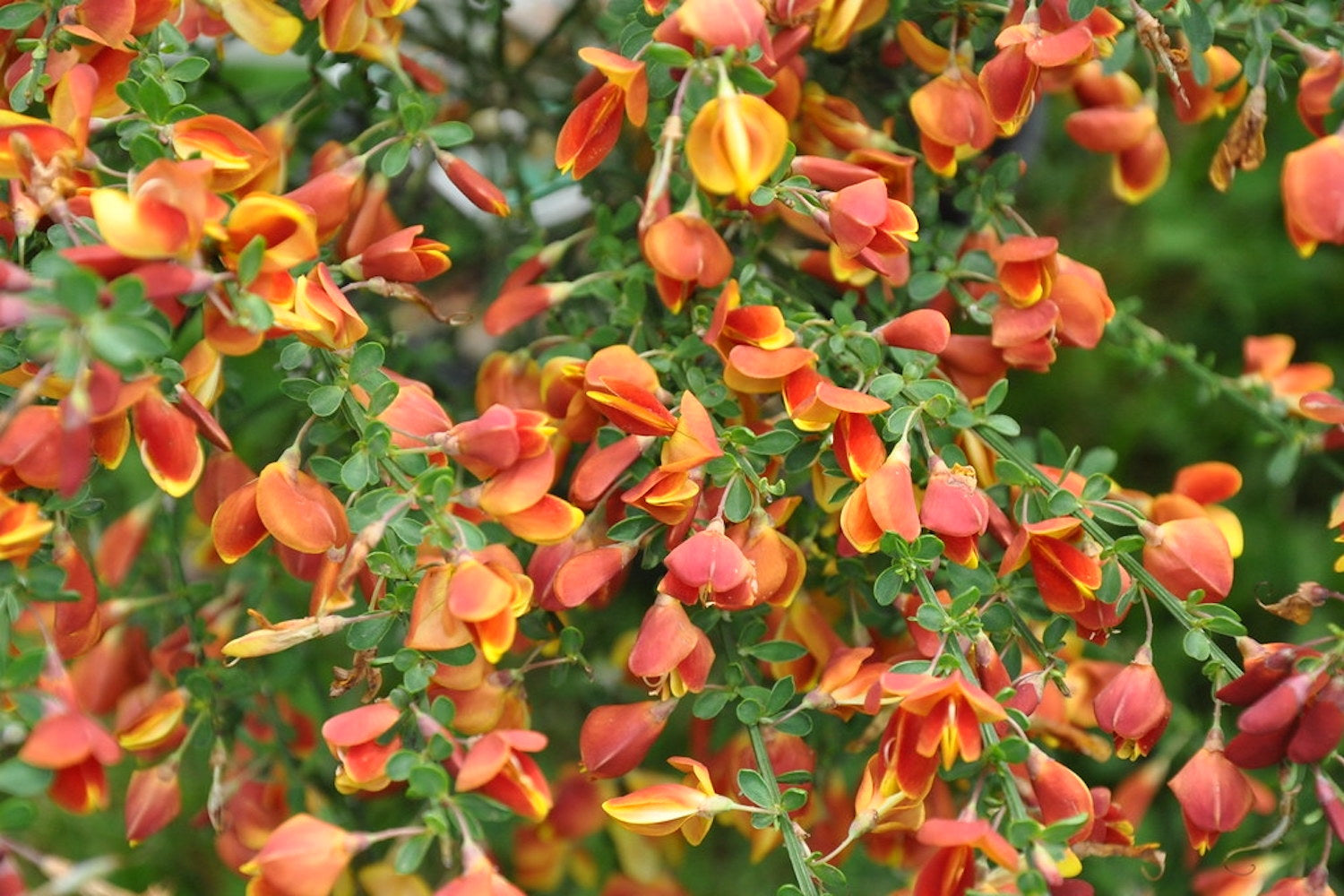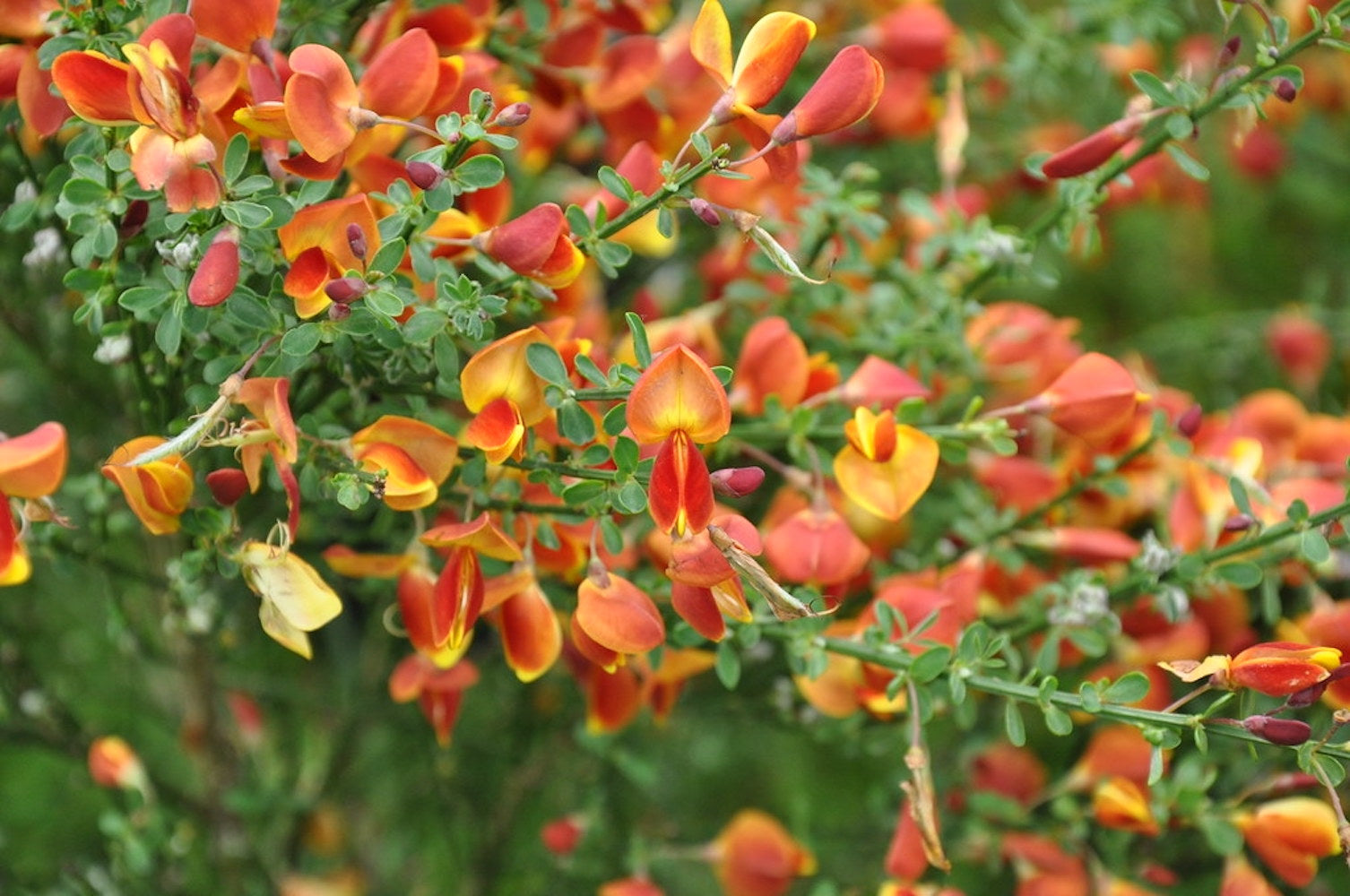Cytisus 'Lena'
Approx. 0.5 litre pot
About this cultivar:
Cytisus 'Lena' is the result of a cross between Cytisus scoparius and Cytisus dallimorei. A small, compact broom, the very small leaves, and twigs, are mid-green. Flowers are a complex mix of red, yellow and orange shades, looking generally russet-orange from a distance. It flowers on upright or slightly arching twigs in late spring and early summer.
It is a slow growing, well behaved, wonderful plant, and despite being, well, a broom....it looks very exotic.
It has the RHS Award of Garden Merit and the RHS 1974 Trial notes seem to claim it was first raised at Kew. However I also read there is a German hybridiser call Lena who introduced it...I know the cultivar 'Luna' is german....ah, well. A broom is a broom is a broom is a broom...
A short youtube video I found below:
- Position: Full sun, partial shade (better in full sun)
- Soil: Almost any soil - Grows well in Ballyrobert
-
Flowers: May, June, July, August
- Other features: Royal Horticultural Society Award of Garden Merit (RHS AGM), Bees, Butterflies, and Bugs
- Hardiness: Fully Hardy - Grows well in Ballyrobert, H5 - Hardy in most places throughout the UK even in severe winters (-15 to -10°C)
- Habit: Bushy
- Foliage: Deciduous
- Height: 100 to 120 cm ( 3.5 - 4 ft)
- Spread: 120 to 150 cm ( 4 - 5 ft)
- Time to full growth: 5 to 10 years
- Plant type: Herbaceous Perennial, Shrub
- Colour: Yellow, green, red, orange
- Goes well with: Wall, Fence, border, informal hedge
About this genus:
Cytisus is a genus of about 50 species of flowering plants in the Legume/Pea family (Fabaceae), native to Europe, western Asia and North Africa. The genus name comes from the Greek word kytisos used by the Greeks for several kinds of woody legumes. Commonly called brooms, they are shrubs producing masses of brightly coloured, often fragrant, pea-like flowers. Usually the flowers are white or yellow.
Commonly found on open sites (typically scrub and heathland) they are often thought of as drought resistant plants, but will grow almost anywhere. Put it this way, they are the closely related to gorse.
Lifecycle wise they are much like Ceanothus - they may be short-lived and have a tendency to decline significantly after 5 years, and don’t respond to pruning. However! HOWEVER! They grow fast, flower profusely, and for a long time. An explosion of flowers that insects love! Depending on the species they are versatile and can look particularly good grown or trained against a sunny, sheltered wall, but can also be used as border plants, informal hedges and ground cover.





